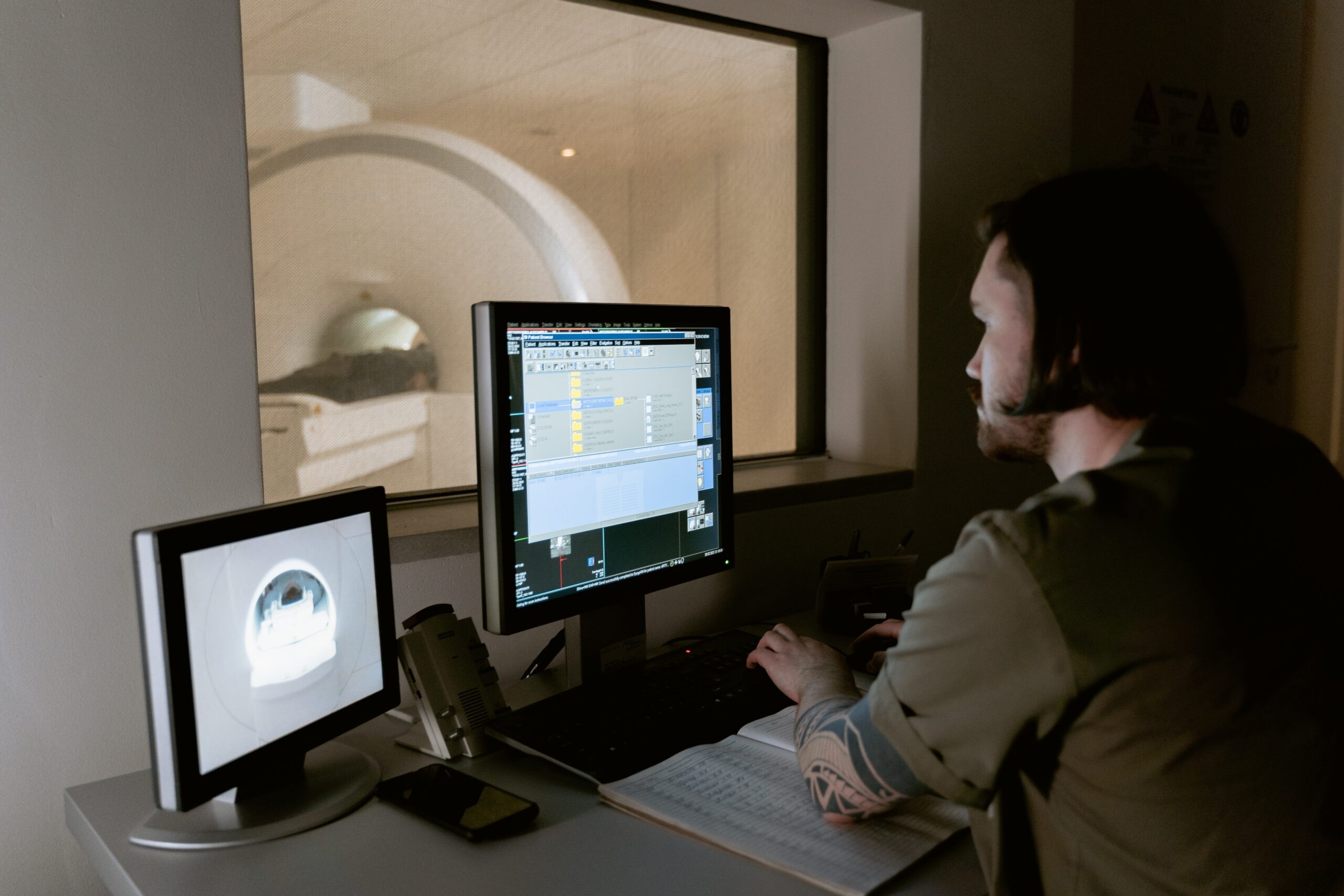Definition
A Computed Tomography (CT) scan is a painless, non-invasive procedure. It takes from a few minutes to half an hour. In most cases, CTs are performed at a hospital or radiology centre as an outpatient procedure. In most CT scanners, only portions of the body are scanned. It has not been shown that whole-body CT scans are an effective method for screening healthy people. Many abnormal findings are not indicative of serious health problems.
CT is used in cancer in different ways to:
- Screen for cancer;
- Help find a tumor;
- Provide information about the stage of a cancer;
- Determine where to perform a biopsy procedure;
- Guide local treatments (i.e. cryotherapy, radiofrequency ablation, implantation of radioactive seeds);
- Help plan external-beam radiation;
- Determine whether cancer responds to treatment;
- Detect recurrence of a tumor.
Contrast (imaging) agents, or dyes, are sometimes used during CT. They highlight specific parts of the body, making the pictures more precise.
Combination of Imaging Methods
A combination of two imaging methods, CT and PET (Positron Emission Tomography), may provide a more accurate picture of how a tumour is growing than either testing alone. This combined procedure may improve the capability of diagnosing cancer, assessing how far a tumour has spread, planning treatment, and monitoring its effectiveness. The combination of PET/CT can also reduce the number of additional imaging tests and other procedures a patient needs.
Is There a Risk Using CT?
Like other medical tests, a CT scan can pose some risks for most people, but it is generally a safe test. Radiographers and doctors determine whether the benefits outweigh the risks before you undergo the test.
Although CT scans expose you to a higher level of radiation than standard x-rays, the risk of cancer from a single scan is still small. CT patients should discuss the benefits and risks of the procedure with their doctors. Radiation is more harmful to children than adults. Furthermore, children have a longer life expectancy than adults, which makes radiation-related cancers more likely to develop.
Parents should ask three key questions when discussing CT scanning with their doctors. When the test is clinically justified, parents can rest assured that the long-term benefits will outweigh the small risks. Women should inform their health care provider and the technologist if they think they are pregnant. A provider may use an alternative imaging method or reduce the radiation dose depending on the part of the body to be scanned. However, there is no evidence that radiation exposure from a CT scan would harm a growing fetus.
What Happens Before the Scan
Depending on which part of your body is being scanned, the entire appointment can last up to an hour and a half. In some cases, special preparation is needed. For example, you might be given a drink or an injection of contrast medium. Injections are given through a thin tube (cannula) in your arm. In case you have any problems following the injection, the tube is left in place until after your scan. Alternatively, the contrast medium can also be taken orally. Using a contrast medium allows the gut (digestive system) to be seen more clearly. Your kidneys may be affected by the contrast medium. To determine if your kidneys are functioning properly, your radiographer checks your most recent blood test results before the scan.
For some brain or chest scans, you might have an injection of the contrast medium before the procedure to improve the scanning and to help showing whether cancer can be surgically removed. A CT colonography (or virtual colonoscopy) is a very detailed scan of the colon. You will need to clear your bowels 2 days before the test by taking some laxatives and following a diet that is suitable for the scan. You will be told more details by your doctor.
It is possible that the radiographer will ask you to change into a hospital gown when you arrive. The scanner produces distorted images when metal objects, including jewellery and hair clips, are present.
What to Expect During the Scan
Mention any anxiety or claustrophobic feelings you have about having a scan to your radiographer. It is necessary for you to lie on your back on the table of the CT scanner. As you move through the machine, pictures are taken. In some CT scanners, the table remains stationary while the machine moves around the patient. Although the scan is painless, you must remain still during it, which can be uncomfortable (listening to music might help you to relax).
Considerations for After Your Scan
Having dye injected into you requires you to stay in the department for about 15 to 30 minutes after your scan. If it makes you feel unwell, which is rare, you will have to stay for that amount of time. You leave the hospital with the cannula removed from your arm. It shouldn’t take long for you to return home, to work, or to the ward. Usually, you get the results within a few weeks after the scan.
CT contrast agents can trigger allergic reactions in very rare instances. Itching or hives (small bumps on the skin) may occur in some people. Shortness of breath and swelling of the mouth or throat are symptoms of a more serious allergic reaction. Report any symptoms to your radiographer immediately.
